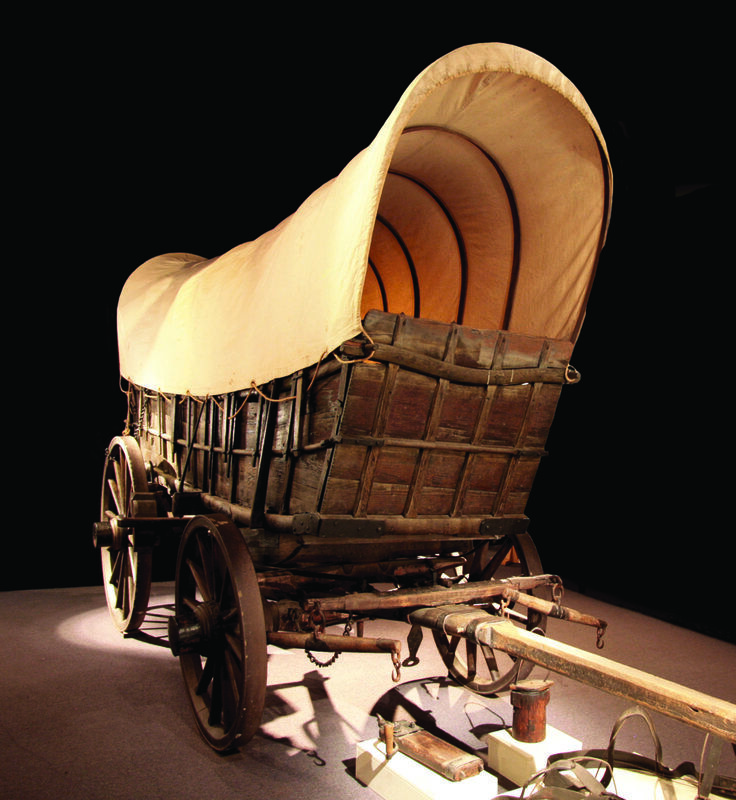Conestoga Wagon
The Conestoga wagon was the ideal vehicle for European settlers in American in the early 18th century. It could carry heavy loads and whole families through difficult terrain, and was used so commonly that it was symbolic not only of the American pioneers but the immigrant groups who used them. This example is from the Ulster American Folk Park, in Northern Ireland, and was advertised as one of the hundred most significant objects for Irish identity.
During the 18th century, more than 200,000 Ulster (Northern Irish people) came to America. Most were Scottish Presbyterians who had first moved to Ulster because of British colonial ambitions, and who later faced religious, economic, and political hardship in their new homes. Poor harvests in the early 18th century and high rents reinforced their desire to leave. While not identifying as refugees in the way we think of today, they were fleeing a life of poverty and oppression back home and searching for success and freedom in America. They moved West, through the Appalachian Mountains, because of tension with other religious and cultural groups in New England; initially welcomed, they were gradually stereotyped as troublesome and short tempered, and moved West to escape this continued persecution.
Their move catalyzed an identity transformation which affected the entire new nation; by rejecting British efforts to keep colonists west of the Appalachians, their actions ultimately led to the American Revolution. They also stole huge amounts of land from Native American groups and ultimately composed a large ethnic group in the Carolinas, Pennsylvania, Virginia, and Georgia. They became the image of the American frontier, the backbone of American country music, the force behind American evangelical religions, and the ancestors of the 7th US President – Andrew Jackson.

